ASD-Notes
My notes on Advanced-Software-Development
Architecture & Applications
- Application Architectures
- Batch/Data Processing Systems
- Transaction Processing Systems
- Event Processing Systems
- Language Processing Systems (Compilers)
- Conclusion
Application Architectures
Application Perspective
- So far had architectural perspectives on issues such as overall control, distribution and system structuring
- Now an alternative approach: architectures from an application perspective, i.e.: various application types
- Two fundamental models of business systems
- Batch processing
- Transaction processing
- Event processing systems
- Language processing systems
Complex Applications
- Two fundamental models of business systems
- Follow a hybrid architectural model:
- Different parts of the application structured in different ways
- Different architecture models for individual subsystems
- Integrated within an overall system architecture
Generic Application Architectures
- Application systems are designed to meet an organisational need
- As businesses have much in common, their application systems also tend to have a common architecture that reflects the application requirements
- A generic architecture is configured and adapted to create a system that meets specific requirements
Use of Application Architectures
- As a starting point for architectural design
- As a design checklist
- As a way of organising the work of the development
- As a means of assessing components for reuse
- As a vocabulary for talking about application types
Application Types
- Data Processing Applications
- Data driven application that process data in branches without explicit user intervention during the processing
- Billing systems; payroll systems
- Data driven application that process data in branches without explicit user intervention during the processing
- Transaction processing applications
- Data centred applications that process user requests and update information in a system database
- E-commerce systems; reservation systems
- Data centred applications that process user requests and update information in a system database
- Event processing systems
- Applications where system actions depend on interpreting events from the system’s environment
- Games; word processors; real-time systems
- Applications where system actions depend on interpreting events from the system’s environment
- Language processing systems
- Applications where the users’ intentions are specified in a formal language that is processed and interpreted by the system
- Compilers, command interpreters
Batch/Data Processing Systems
- Compilers, command interpreters
- Applications where the users’ intentions are specified in a formal language that is processed and interpreted by the system
- Data-centred systems where the databases used are usually orders of magnitude larger than the software itself
- Data is input and output in batches
- Input - a set of customer numbers and associated readings of an electricity meter
- Output - a corresponding set of bills, one for each customer number
- Data processing systems usually have an
input->process->outputstructureInput-process-output
- Input component reads data from a file or database, checks if validity and queues the valid data for processing
- Process component takes a transaction from the queue (input), performs computations and creates a new record with the results of the computation
- Output component reads these records, formats them accordingly and writes them to the database or sends them to a printer
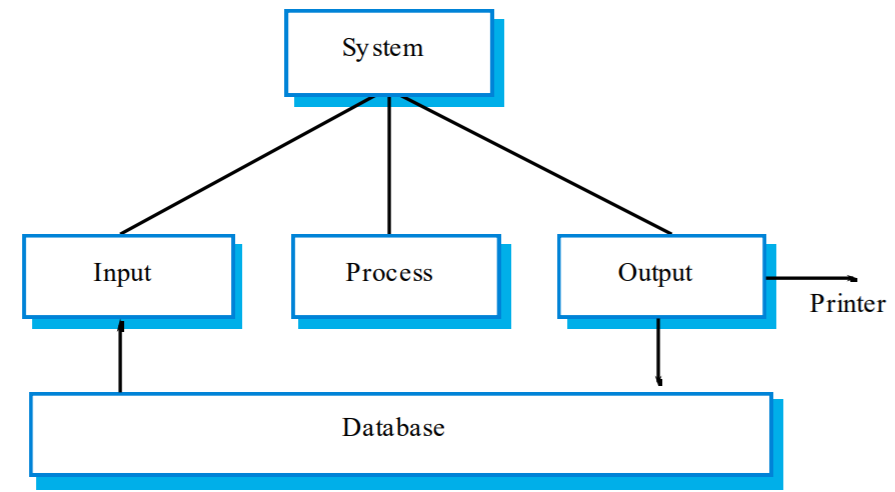
Transaction Processing Systems
- Process user requests for information from a database or or requests to update the the database
- From a user perspective a transaction is:
- Any coherent sequence of operations that satisfies a goal
- For example - find the times of flight from London to Paris
- Users make asynchronous requests for service which are then processed by a transaction manager

Transaction processing middleware
- Transaction management middleware or teleprocessing monitors handle communications with different terminal types (e.g.: ATMs and counter terminals), serialises data and sends it for processing
- Query processing takes place in the system database and results are sent back through the transaction manager to the user’s terminal
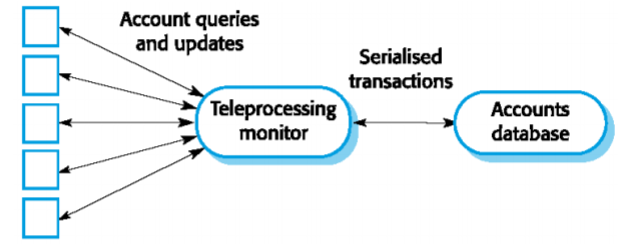
Information Systems Architecture
- Information systems have a generic architecture that can be organised as a layered architecture
- Layers include
- The user interface
- User communications
- Information retrieval
- System database
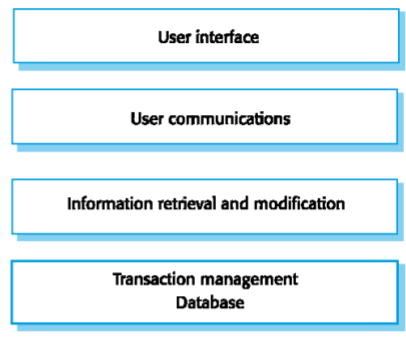
Resource Allocation Systems
- Systems that manage a fixed amount of some resource (football game tickets, books in a bookshop, etc) and allocate this to users
- Example of resource allocation systems
- Timetabling systems where the resource being allocated is a time period
- Library systems where the resource being managed is books and other items for loan
- Air traffic control systems where the resource being managed is the airspace
Resource Allocation Architecture
- Resource allocation systems are layered systems that include
- A resource database
- A rule set describing how resources are allocated
- A resource manager
- A resource allocator
- User authentication
- Query management
- Resource delivery component
- User interface
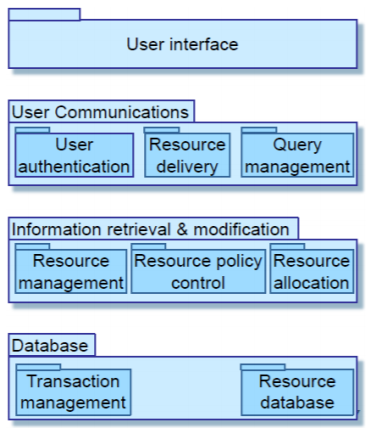
E-Commerce System Architecture
- E-commerce systems are Internet-based resource management systems that accept electronic orders for goods or services
- Usually organised using a multi-tier architecture with application layers associated with each tier

Event Processing Systems
- These systems respond to events in the system’s environment
- Their key characteristics is that event timing is unpredictable so the architecture has to be organised to handle this
- Many common systems such as word processors, games, etc. are event processing systems
Editing Systems
- Common type of event processing system
- Editing system characteristics
- Single user systems
- Must provide rapid feedback to user actions
- Organised around long transactions so may include recovery facilities
Editing System Architecture
- Editing systems are naturally object-oriented
- Screen - monitors screen memory and detects events
- Event - recognises events and passes them for processing
- Command - executes a user command
- Editor data - manages the editor data structure
- Ancillary data - manages other data such as styles & preferences
- File system - manages file I/O
- Display - updates the screen display
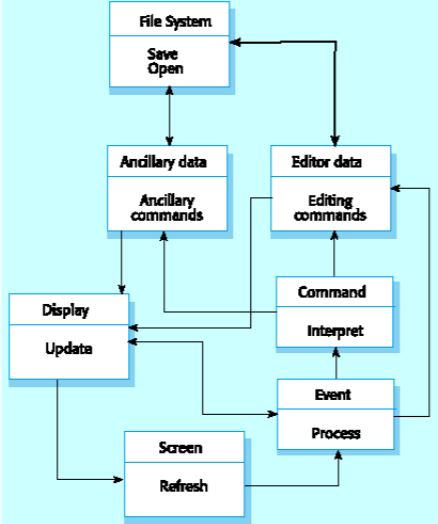
Information and Resource Management Systems
Language Processing Systems (Compilers)
- Input a natural or artificial language and generate another representation
- Programming language to machine code
- May interpret code and execute it
- Used when the easiest way to solve a problem is implement an algorithm
- Als used for domain-specific languages
- What is that?
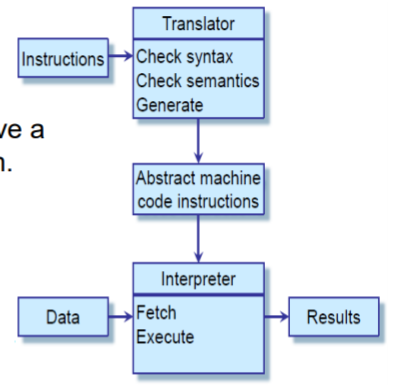
Language Processing Components
- Lexical analyser (tokenizer, scanner) - produces tokens: the words in the language, e.g.: variable names, operators, etc,
- Symbol table - stores the words
- Syntax analyser - parses tokens to produce a syntax tree, checks that tokens conform to the rules of the language
- Syntax tree - stores the program
- Semantic analyser - check aspects not related to syntactic form, e.g.: type correctness
- Code generator - transform and optimise the syntax tree into instructions for the target machine
- Can think of it as a python filter process

Can also think of it as a Repository model of a compiler, where the repository handles the syntax definition and symbol table, output definition etc - as follows:
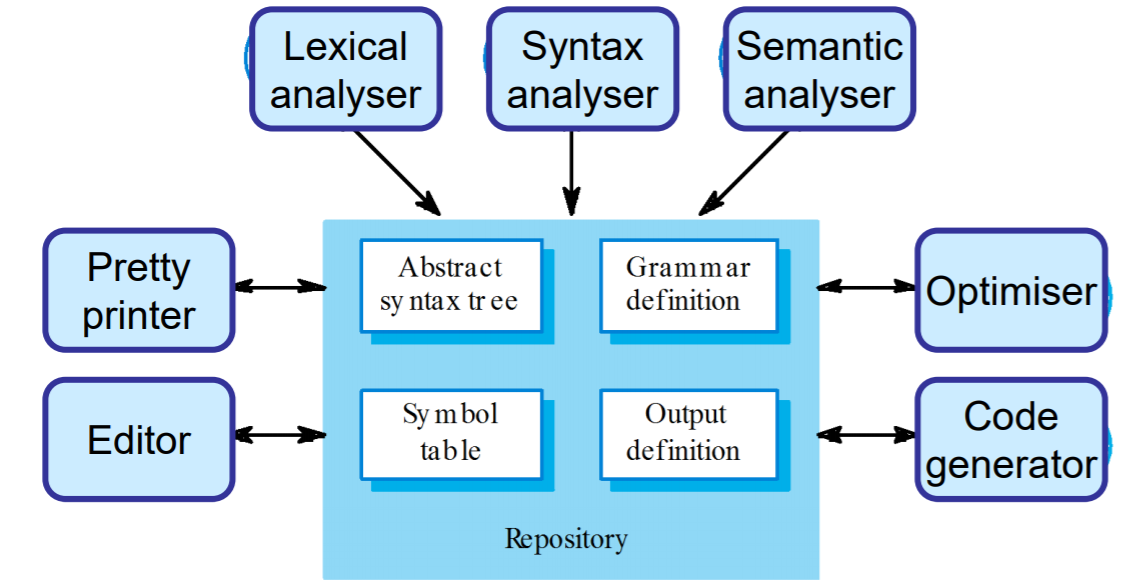
Conclusion
- Generic models of application architectures help us understand and compare applications
- Important classes of application are data processing systems, transaction processing systems, event processing systems and language processing system
- Or a combination
- Data processing systems operate in batch mode and have an
input -> process -> output structure. - Transaction processing systems allow information in a database to be remotely accessed and modified by multiple users
- Event processing systems respond to events in the environment
- Language processing systems translate texts from one language to another and may interpret the specified instructions
- Typescript -> Javascript